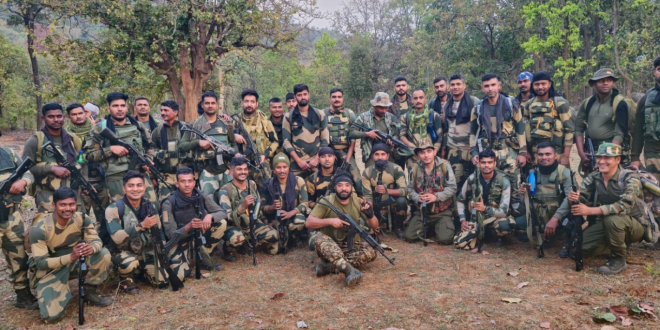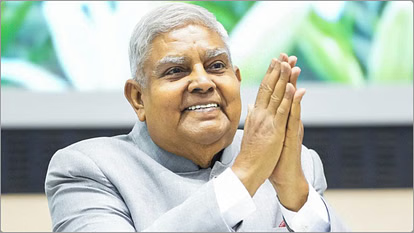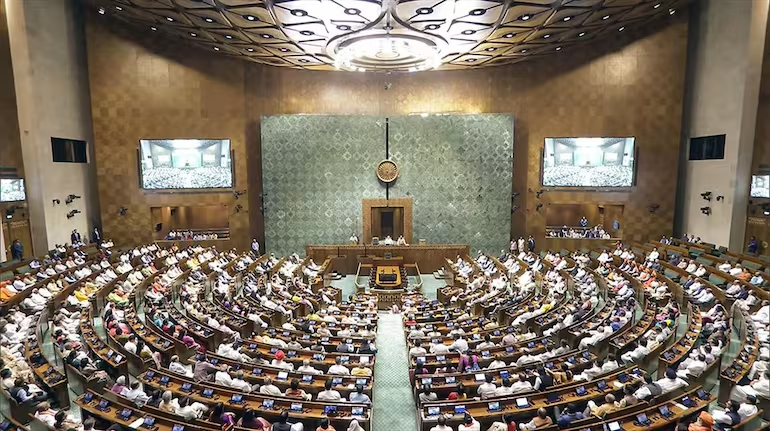In a significant anti-Maoist operation, security forces gunned down 16 Maoists in a fierce encounter in the dense forests of Sukma district, Chhattisgarh, on Saturday, March 29, 2025. The clash, which erupted in the early hours, also left two security personnel injured, marking another milestone in the Indian government’s intensified campaign to eradicate Left-Wing Extremism (LWE) by March 2026.
The Encounter Unfol ds
The operation began around 8 a.m. in the Upampalli Kerlapal forest near the Sukma-Dantewada border, an area notorious as a Maoist stronghold. Acting on precise intelligence about the presence of armed cadres from the banned Communist Party of India (Maoist), a joint team comprising the District Reserve Guard (DRG), Central Reserve Police Force (CRPF), and local police launched a search mission on Friday night. The encounter broke out when the forces, advancing through the rugged terrain, came under heavy fire from Maoist insurgents.
Sukma Superintendent of Police Kiran Gangaram Chavan confirmed the recovery of 16 Maoist bodies at a press briefing later that day. “The exchange of fire began at 8 a.m. and continued intermittently. So far, we have recovered 16 bodies of Naxals, along with a massive cache of automatic weapons, including AK-47s, SLRs, INSAS rifles, and other arms and ammunition in large numbers,” Chavan stated. Two DRG jawans sustained minor injuries during the gunfight and were evacuated to a nearby medical facility, where they are reported stable.
Strategic Significance
The encounter occurred in Sukma, part of the volatile Bastar region, where the Maoists’ dreaded Battalion 1 of the People’s Liberation Guerrilla Army (PLGA) is known to operate. Inspector General of Police (Bastar Range) P. Sundarraj hailed the operation as a critical strike against the insurgency. “This takes the total number of Maoists killed in Chhattisgarh this year to 132, reflecting the relentless efforts of our forces to dismantle Naxal networks,” he said. The operation’s success is attributed to improved intelligence and coordination among state and central forces, a strategy emphasized by Union Home Minister Amit Shah, who has set a deadline of March 31, 2026, to eliminate Maoism nationwide.
The recovery of advanced weaponry underscores the Maoists’ persistent threat, even as their numbers dwindle. Security sources indicated that the operation remained ongoing as of Saturday afternoon, with intermittent firing reported and the possibility of additional casualties still under assessment.
Government and Political Response
Union Home Minister Amit Shah took to social media to commend the security forces, calling it “another strike on Naxalism.” He reiterated his appeal to armed insurgents: “Weapons and violence cannot bring change; only peace and development can. Our security agencies have neutralized 16 Naxalites and recovered a massive cache of automatic weapons in Sukma.” Shah’s statement aligns with the Modi government’s dual approach of military action and developmental outreach to counter the Maoist insurgency.
Chhattisgarh Chief Minister Vishnu Deo Sai echoed this sentiment, praising the bravery of the forces. “Under our double-engine government, we are moving swiftly toward a Naxal-free Chhattisgarh by March 2026. The sacrifice of our jawans will not go in vain,” he said, referencing the state’s progress—282 Maoists killed, 1,033 arrested, and 925 surrendered in the past 13 months.
Broader Context
The Sukma encounter is the latest in a series of high-intensity operations in 2025, with security forces achieving unprecedented success against Maoists. Earlier this month, on March 20, 30 Maoists were killed in twin encounters in Bijapur and Kanker, followed by three more in Dantewada on March 25. The year has already seen 132 Maoist fatalities, a sharp rise from 29 in the same period last year, signaling a decisive push to penetrate deep into rebel strongholds like the Kerlapal forest.
The Maoist insurgency, rooted in demands for land, jobs, and resource rights for marginalized tribal communities, has plagued Chhattisgarh’s Bastar region for decades. However, the government’s aggressive strategy—combining road construction, forward bases, and welfare schemes—has weakened their foothold, though challenges like IED attacks persist. Just weeks ago, on January 6, an IED blast in Bijapur claimed eight security personnel and a civilian driver, underscoring the ongoing risks.
Looking Ahead
As search operations continue in Sukma, security forces remain on high alert for potential retaliatory strikes. The identification of the slain Maoists is underway, with officials expecting some to be high-ranking cadres, further disrupting the insurgency’s command structure. Meanwhile, the injured jawans’ recovery is a priority, with officials ensuring they receive the best care.
Today’s encounter reinforces the government’s resolve to meet its 2026 deadline, but it also highlights the human cost of this protracted conflict. As Chhattisgarh edges closer to peace, the balance between security operations and reconciliation efforts remains a critical test for both state and central leadership.
 Indian Thought Latest News & Views
Indian Thought Latest News & Views



